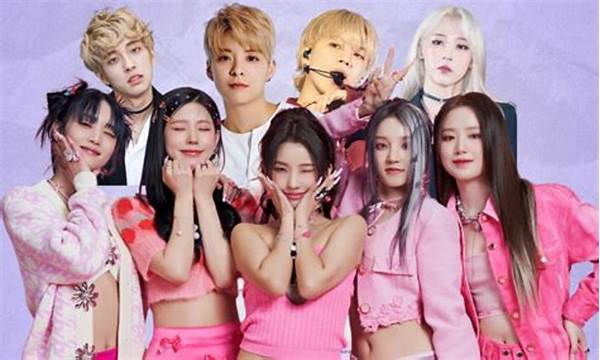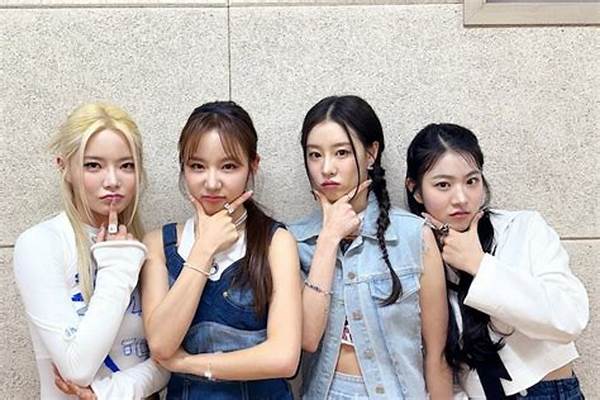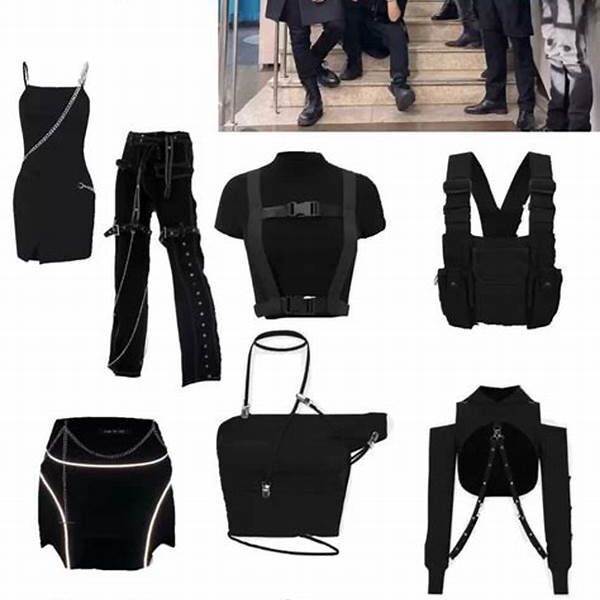Hey, K-pop fans and curious souls alike! Today, we’re diving into something fascinating: the representation of genders in K-pop. Now, if you’re a K-pop aficionado or just someone who occasionally dabbles in the infectious tunes and dazzling visuals of this genre, you know it’s not just about catchy beats. One of the elements that make K-pop unique is the way it juggles and showcases different gender representations, playing with norms and highlighting diverse personas. Let’s unravel this intriguing aspect of K-pop together!
Read Now : Low-cost Korean Trendsetting Pieces
Breaking the Gender Norms
In the vibrant world of K-pop, the representation of genders in K-pop takes on a colorful, daring palette. Unlike many other music industries where gender roles are tightly defined, K-pop plays on the flexibility and fluidity of gender presentation. Whether it’s female idols donning sharp suits or male idols embracing softer, traditionally feminine looks, there’s a sense of freedom and expression that’s refreshing to see. These artists push boundaries, challenge societal norms, and often make us question what it means to present oneself as male or female.
Delving deeper, many K-pop groups intentionally blur the lines between traditional gender roles. For instance, co-ed groups or concepts where members switch up their expected gender portrayals are becoming more common. This not only serves as a refreshing change in narrative but also offers fans diverse ways to connect and identify. The representation of genders in K-pop helps to foster a more inclusive environment, allowing fans to see parts of themselves reflected back in their idols.
Moreover, this wave isn’t just confined to aesthetics. Lyrics and music videos also reflect this gender fluidity, often tackling themes like self-identity, empowerment, and breaking free from societal constraints. With each comeback and album, K-pop continues to evolve, painting a broader and more inclusive picture of gender for its global audience.
Gender Roles in Performances
1. Costume Choices
The representation of genders in K-pop often shines through bold costume choices. Gender-neutral outfits and style switches are common, breaking traditional boundaries.
2. Choreography
K-pop dances frequently showcase gender fluidity. We see male idols executing “feminine” moves and vice versa, enhancing the duality of gender representation.
3. Concept Themes
Each comeback can be a new exploration in gender representation, whether it’s boys in makeup or girls leading the charge in powerful suits.
4. Collaboration Among Genders
Co-ed performances and collaborations highlight the seamless blending of gender roles in K-pop, showcasing harmony and equal footing among different genders.
5. Lyrics and Messaging
Through thoughtful lyrics, K-pop artists often challenge gender stereotypes, encouraging their listeners to embrace their true selves regardless of gender expectations.
The Rise of Androgyny
The representation of genders in K-pop has seen a notable rise in androgyny recently. You’ll often spot idols wearing styles that blend masculine and feminine elements. This isn’t just a fashion statement but a form of self-expression that resonates with a diverse fan base worldwide. By blurring these lines, K-pop artists are sending a powerful message that self-expression knows no gender boundaries.
Androgyny in K-pop also reflects societal shifts toward greater acceptance and celebration of non-binary identities. It provides fans, particularly those grappling with their gender identity, a sense of representation and affirmation. This evolution in representation of genders in K-pop allows for more personal connections, as fans see their struggles and joys mirrored by their idols. It’s about authenticity— embracing who you are beyond the limitations of gender norms.
Gender Identity Beyond The Screen
When it comes to real-life interactions, the representation of genders in K-pop continues beyond music videos and performances. Many idols openly discuss gender issues and their own journeys with identity during interviews or live sessions, showcasing courage and vulnerability. Such openness from public figures can have a profound impact on young audiences and offer a broader platform for discussing gender-related topics.
1. Idol Interviews
Through candid conversations, K-pop idols share their thoughts on gender roles, offering personal insights and breaking the fourth wall for fans.
2. Social Media Influence
Social media allows idols to express themselves authentically, providing glimpses into their real attitudes toward gender beyond staged performances.
3. Fashion Statements
Read Now : Wallet-friendly Korean Style Secrets
By choosing non-traditional gender attire in public appearances, idols challenge norms and set trends, influencing fans and fashion alike.
4. Role Models
These stars often become role models for fans struggling with their identity, showing that gender fluidity is relatable and embraced within the industry.
5. Fan Interactions
Interactions with fans online or at events reflect genuine acceptance and encouragement for all gender identities, breaking societal barriers.
6. Public Awareness Campaigns
Many idols use their platform to support gender equality and inclusivity, aligning their public persona with positive representation of different genders.
7. Fan Content
Fans often create content that continues the dialogue on gender representation, adding to the broader conversation initiated by their idols.
8. Charity and Support Work
Through charitable initiatives, K-pop artists often support gender issues, proving their commitment to equality beyond entertainment.
9. Cultural Impact
By consistently pushing gender boundaries, K-pop influences broader cultural perceptions, encouraging more diverse representations across media.
10. Market Expansion
As K-pop grows globally, diverse gender representation becomes a powerful part of its appeal, attracting fans from varied backgrounds and identities.
The Impact on Western Audiences
The representation of genders in K-pop isn’t just making waves in South Korea; it’s also having a significant impact on Western audiences. As K-pop groups continue to garner international fan bases, their bold expressions of gender are influencing how gender is perceived worldwide. Western fans, especially younger ones, often find a welcoming space in the fandoms that align with their views on gender and identity.
K-pop serves as a cultural bridge, offering new perspectives and challenging conventional gender norms that might be prevalent in Western societies. The colorful portrayals and performances of K-pop idols inspire fans to embrace all facets of their identity, leading to a gradual shift toward more inclusive representations of gender in mainstream media. The ripple effect of this shift is evident in how Western pop culture is gradually integrating more gender-fluid themes and identities.
The Future of Gender Representation in K-Pop
Looking ahead, the representation of genders in K-pop is likely to continue evolving, driving more inclusivity and diversity. As this genre becomes an integral part of global culture, its approach to gender has the potential to set new standards and break down long-standing stereotypes both within and outside the music industry. It’s an exciting time for K-pop and for fans who thrive on its positive and progressive messages.
As fans, we can look forward to music that not only entertains but also uplifts diverse voices. By embracing the representation of genders in K-pop, we acknowledge a broader spectrum of identity and create spaces where everyone feels seen and celebrated. Whatever the future holds, one thing’s for sure: K-pop will continue to play a pivotal role in redefining gender representation on a global stage.


